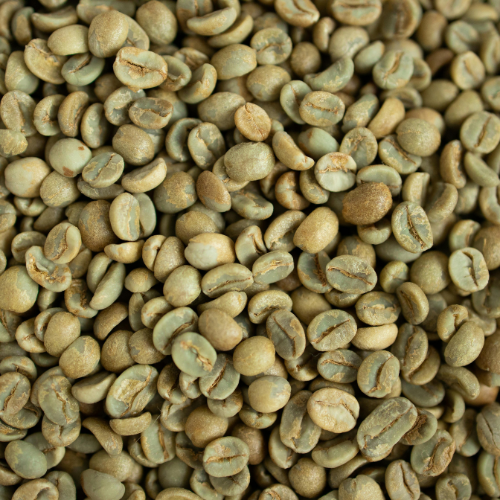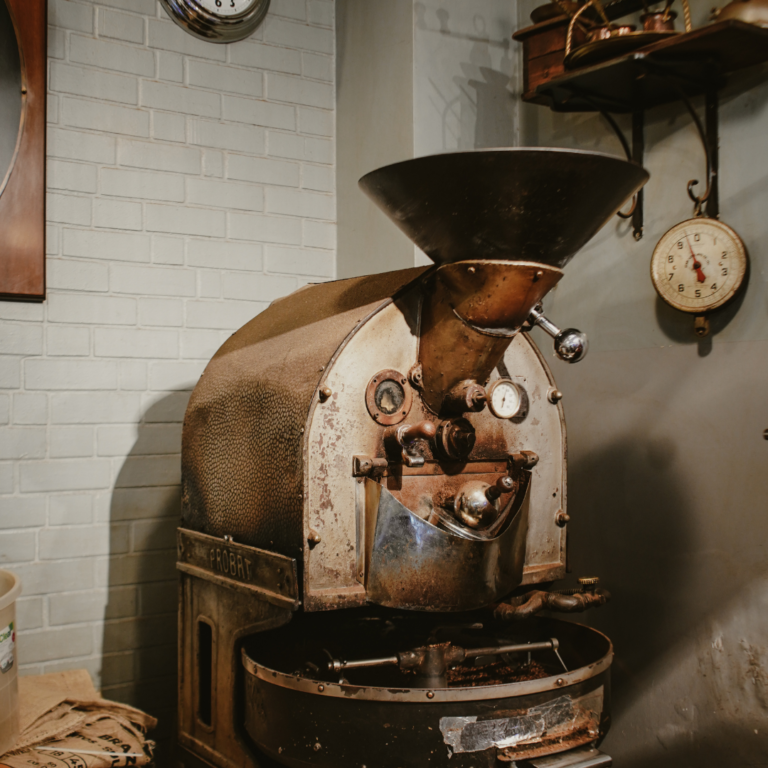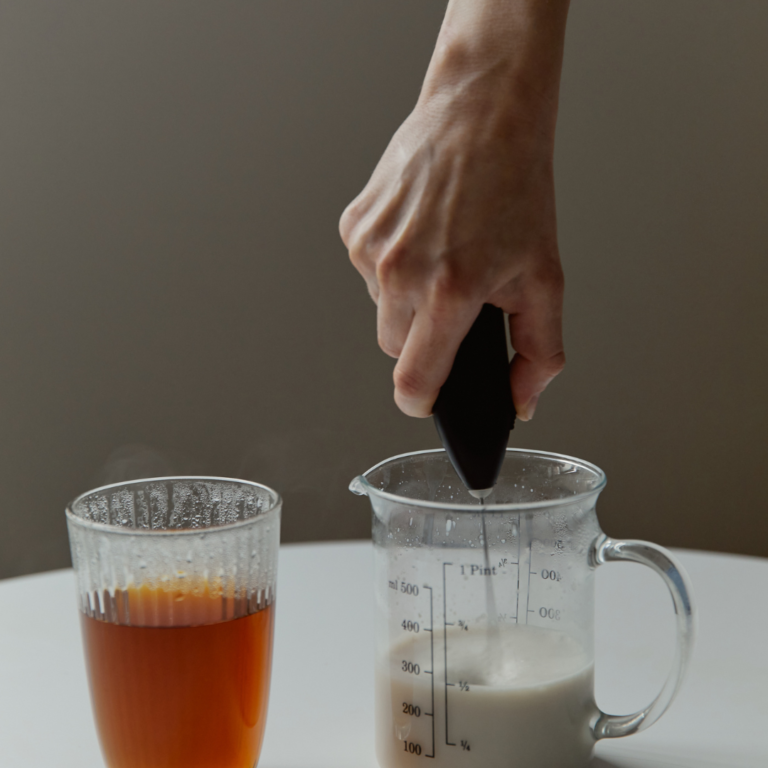Cleaning your coffee grinder is crucial for several reasons. First, coffee beans leave behind oils and residue that can build up over time, potentially going rancid and affecting the taste of your coffee. Additionally, these residues can clog your grinder, reducing its efficiency and lifespan. Regular cleaning ensures that your grinder operates at peak performance and delivers the freshest coffee possible.

Avoiding Rancid Tastes
Coffee oils are flavourful but can become rancid quickly if left to accumulate. This rancidity can impart unpleasant flavours to your coffee, making it bitter or sour. By cleaning your grinder regularly, you prevent these oils from turning your fresh beans into a less palatable brew.
Ensuring Efficiency and Longevity
A clogged grinder struggles to perform efficiently. Residue build-up can cause strain on the motor or grinding mechanism, leading to potential breakdowns. Regular maintenance not only ensures a smooth grind but also extends the life of your appliance, saving you money in the long run.
Maintaining Consistent Flavour
Consistency is key in brewing a great cup of coffee. Residual grounds from previous grinds can mix with fresh beans, altering the flavour profile and consistency of your coffee. Regular cleaning helps maintain the purity and intended taste of your coffee beans.
Types of Coffee Grinders
Before we delve into the cleaning process, it’s important to understand the different types of coffee grinders. Each type may require a slightly different cleaning approach.
Burr Grinders
Burr grinders, popular in Australia and beyond, are known for their ability to produce consistent grounds, which is essential for making great espresso. These grinders use two revolving abrasive surfaces, or burrs, to crush coffee beans into uniform particles.
How Burr Grinders Work
The precision of burr grinders lies in their design. The beans are funnelled between two burrs, one stationary and the other rotating, ensuring a uniform grind size. This consistency is crucial for espresso and other brewing methods where precision matters.
Advantages of Burr Grinders
Apart from consistency, burr grinders offer a range of grind sizes, making them versatile for different brewing methods. This adaptability is one reason they are favoured by coffee connoisseurs and professionals alike.
Cleaning Considerations for Burr Grinders
Burr grinders require meticulous cleaning. Coffee residues can hide in the crevices of the burrs, necessitating a thorough cleaning routine to maintain performance and prevent flavour contamination.
Blade Grinders
Blade grinders use a spinning blade to chop up coffee beans. While they are generally less expensive than burr grinders, they can produce uneven grounds, which might not be ideal for espresso.
Mechanism of Blade Grinders
Blade grinders operate like mini food processors, where the beans are chopped rather than crushed. The simplicity of the design makes them more affordable but less precise compared to burr grinders.
Pros and Cons of Blade Grinders
While budget-friendly, the inconsistency in grind size can be a drawback for coffee aficionados seeking the perfect brew. However, they are suitable for drip coffee makers and French presses where precision is less critical.
Cleaning Blade Grinders
Blade grinders can accumulate oils and fine particles around the blade. Using uncooked rice as a cleaning agent can help absorb these oils and lift residues, ensuring a cleaner grind.
Manual Grinders
Manual coffee grinders require a bit more elbow grease but offer a more hands-on experience. They are typically smaller and more portable, making them a good option for coffee lovers on the go.
The Appeal of Manual Grinders
Manual grinders provide a tactile experience, allowing users to feel connected to the coffee-making process. They are often favoured by those who enjoy the ritualistic aspect of brewing coffee.
Advantages of Portability
Their compact size makes manual grinders ideal for travel or camping. Coffee enthusiasts who can’t compromise on the quality of their brew appreciate the portability without sacrificing the grind quality.
Cleaning Tips for Manual Grinders
Manual grinders may have more intricate parts that require careful disassembly. Regular cleaning prevents wear on the grinding mechanism and ensures a consistent grind.
Automatic and Electric Grinders
Automatic and electric grinders take the guesswork out of coffee grinding. These grinders often come with adjustable settings, allowing you to choose the grind size that best suits your brewing method.
Convenience of Automatic Grinders
Electric grinders simplify the grinding process with the push of a button. They are equipped with features like timers and grind size adjustments, catering to various brewing preferences with ease.
Features and Flexibility
Automatic grinders often come with multiple settings, from fine to coarse, enabling users to experiment with different brewing techniques without needing separate equipment.
Maintenance of Electric Grinders
Keeping electric grinders clean involves more than just the grinding chamber. Attention must be paid to the motor and electrical components to avoid damage during cleaning.
How to Clean Your Coffee Grinder
Now that we understand the different types of grinders, let’s look at how to clean them effectively.
Step 1: Gather Your Cleaning Supplies
Before you begin, gather the necessary cleaning supplies. You’ll need:
- A soft brush or toothbrush
- A clean, dry cloth
- Rice (for blade grinders)
- Mild dish soap (optional)
The Role of Each Supply
A soft brush is essential for loosening stubborn coffee particles without damaging the grinder. A dry cloth helps remove dust and residual oils. Rice acts as an absorbent cleaner for blade grinders, while mild dish soap can assist in deep cleaning removable parts.
Importance of Having Supplies Ready
Having all your supplies ready ensures a smooth and efficient cleaning process. It also minimizes the downtime of your grinder, allowing you to get back to brewing your favourite cup faster.
Alternatives and Enhancements
For those seeking eco-friendly options, natural cleaning agents like vinegar or lemon can be used in place of dish soap. Additionally, specialized grinder cleaning tablets are available for deep cleaning.
Step 2: Unplug and Disassemble the Grinder
Safety first! Always unplug your grinder before cleaning. Next, disassemble the grinder according to the manufacturer’s instructions. For burr grinders, this usually involves removing the hopper and upper burr. For blade grinders, you may need to remove the lid and blades.
Importance of Safety Measures
Unplugging the grinder ensures that you avoid accidental injuries during the cleaning process. It also protects the electrical components from moisture exposure, which can cause damage.
Disassembling with Care
Refer to the manufacturer’s manual to properly disassemble your grinder. This ensures that you don’t forcefully remove parts, which could lead to breakage or improper reassembly.
Managing Small Parts
Keep track of small parts like screws or gaskets during disassembly. Using a small dish or container can help prevent losing these crucial components.
Step 3: Clean the Hopper and Exterior
Wipe down the hopper and the grinder’s exterior with a clean, dry cloth. If there’s stubborn residue, you can use a slightly damp cloth, but be sure to dry it thoroughly afterward. Avoid using water on the electric components of your grinder.
Removing Surface Residue
Using a dry cloth helps in removing loose particles and dust, maintaining the aesthetic appeal of your grinder. A damp cloth can tackle more stubborn spots without risking water damage.
Avoiding Water Damage
Water can be detrimental to electric components. Ensuring that cloths are only slightly damp and that all parts are dried thoroughly prevents moisture-related issues like rust or electrical shorts.
Cleaning Hard-to-Reach Areas
A soft brush can be used to reach nooks and crannies in the grinder’s exterior, ensuring that no particle is left behind. Regular attention to these areas prevents long-term build-up.
Step 4: Clean the Burrs or Blades
For burr grinders, use a soft brush or toothbrush to gently remove coffee particles and oils from the burrs. Be thorough, as coffee residue can accumulate in crevices.
For blade grinders, add a small amount of uncooked rice to the grinder and run it for a few seconds. The rice will absorb oils and coffee residue. Discard the rice and wipe the inside with a cloth.
Detailed Cleaning of Burrs
Pay attention to every groove and crevice in the burrs. A brush with firm bristles can effectively dislodge stubborn particles, ensuring the burrs operate smoothly.
Using Rice for Blade Grinders
Rice acts as a natural abrasive, absorbing oils and gently scrubbing the blades. This method is both efficient and cost-effective, leaving your grinder fresh without using harsh chemicals.
Ensuring Thoroughness
After cleaning, inspect the grinder for any remaining residues. Re-clean, if necessary, as even small amounts of leftover grounds can affect the flavour of your coffee.
Step 5: Reassemble the Grinder
Once everything is clean and dry, reassemble your grinder. Make sure all parts are securely in place before plugging it back in.
Checking for Proper Assembly
Refer to your manual to ensure each piece is correctly fitted. Proper assembly is crucial for the grinder’s functionality and safety.
Secure Connections
Ensure all screws and fasteners are tightened properly. Loose parts can cause the grinder to malfunction or produce inconsistent grind sizes.
Testing Reassembled Parts
Before plugging in, manually test moving parts to confirm they operate smoothly. This pre-check can prevent potential damage once powered on.
Step 6: Test the Grinder
Before you put your grinder back into full use, test it with a small batch of coffee beans to ensure it’s working properly and that no cleaning residue remains.
Conducting a Trial Run
Use a small amount of coffee beans to test the grinder. This trial run ensures that any cleaning residues are fully removed and that the grinder is functioning correctly.
Observing Grinder Performance
Listen for unusual sounds or resistance, which can indicate improper assembly or remaining debris. Ensuring smooth operation before full use prevents potential damage.
Adjustments if Necessary
If the grinder isn’t performing as expected, revisit the cleaning and assembly steps. Sometimes a simple adjustment can resolve minor issues.
How Often Should You Clean Your Coffee Grinder?
The frequency of cleaning depends on how often you use your coffee grinder. As a general rule of thumb, aim to clean your grinder at least once a month. If you use it daily, consider cleaning it more frequently to prevent build-up.
Daily Use Considerations
For daily users, weekly cleaning is recommended to prevent oil and residue build-up. This frequent maintenance ensures every cup of coffee is as fresh as possible.
Occasional Use Guidelines
For those who use their grinder less frequently, monthly cleaning might suffice. However, if you notice any stale flavours or decreased performance, consider cleaning sooner.
Signs Your Grinder Needs Cleaning
Be attentive to changes in taste or grinder performance. A bitter aftertaste or difficulty in grinding can signal the need for immediate cleaning.

Tips for Maintaining Your Coffee Grinder
- Avoid Overloading: Don’t overload your grinder with too many beans at once. This can strain the motor and lead to uneven grinding.
Avoid Overloading
Overloading can cause the grinder’s motor to overheat, leading to potential burnout. By grinding in smaller batches, you ensure the longevity and efficiency of your grinder.
Store Properly
Store your grinder in a cool, dry place to prevent moisture from affecting its components.
Importance of Storage
Proper storage prevents moisture and dust from entering the grinder, both of which can lead to internal damage or residue build-up.
Ideal Storage Conditions
Keep your grinder away from heat sources and direct sunlight. A cupboard or pantry is ideal, as it maintains a stable environment for your equipment.
Long-term Storage Tips
If storing for an extended period, consider cleaning and disassembling your grinder to prevent any residual oils from going rancid.
Use Quality Beans
High-quality beans tend to have fewer oils and residue, making them less likely to clog your grinder.
Benefits of Quality Beans
Quality beans not only enhance the taste of your coffee but also reduce the amount of residue left behind. This minimizes cleaning frequency and prolongs grinder life.
Identifying Quality Beans
Look for beans with a consistent colour and minimal surface oil. Beans roasted recently are preferable, as they retain more flavour and produce less residue.
Impact on Grinder Maintenance
Using quality beans can significantly reduce the need for intense cleaning, as they tend to leave less debris and oil in the grinder.
Conclusion
Regular cleaning of your coffee grinder is essential for maintaining the quality and flavour of your coffee. Whether you have a burr grinder, blade grinder, or an automatic grinder, these simple steps will help you keep it in top condition.
By following the cleaning guide outlined above, you can ensure that your coffee grinder continues to deliver the perfect grind for your morning brew. Remember, a clean grinder is the first step to a delicious cup of coffee!
Embracing Routine Maintenance
Making cleaning part of your routine ensures that your coffee experience remains consistently enjoyable. A well-maintained grinder is a crucial element in the pursuit of coffee excellence.
Commitment to Quality
Your commitment to cleaning is a commitment to quality. By taking the time to maintain your grinder, you’re investing in the best possible coffee experience.
Final Thoughts
A clean grinder is a happy grinder. By keeping your equipment in top shape, you’re not only enhancing your coffee’s flavour but also extending the life of your grinder, ensuring many more delightful mornings to come.








